Interesting Facts About Bees
- Honey bees have five eyes
- Bees have been producing honey for at least 150 million years
- A cave painting depicting an androgynous figure robbing honey out of the hive was found in the Cave of the Spider in Valencia, Spain. It is estimated to be 15,000 years old.
- Honey stored in air tight containers never spoils. Sealed honey vats found in King Tut’s tomb still contained edible honey, despite over 2,000 years beneath the sands.
- 80% of the pollination of the fruits, vegetables and seed crops in the U.S. is accomplished by honeybees.
- A queen is the largest bee in the hive. She can lay up to 2,000 eggs per day, twice her own body weight per day.
- Bees have to fly over 55,000 miles to make 1 lb. of honey.
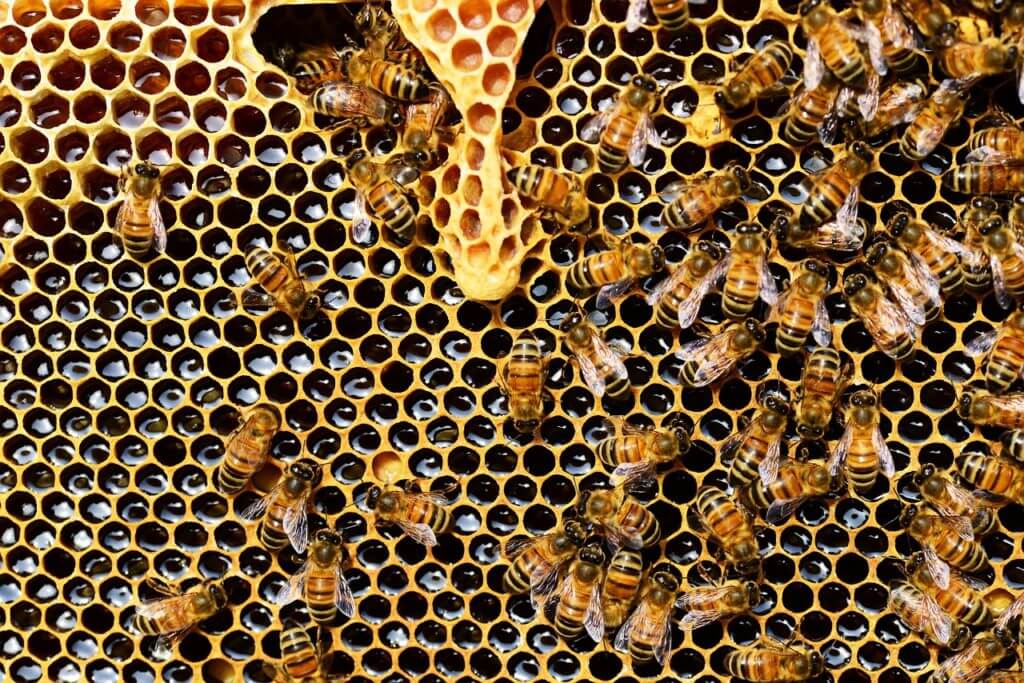
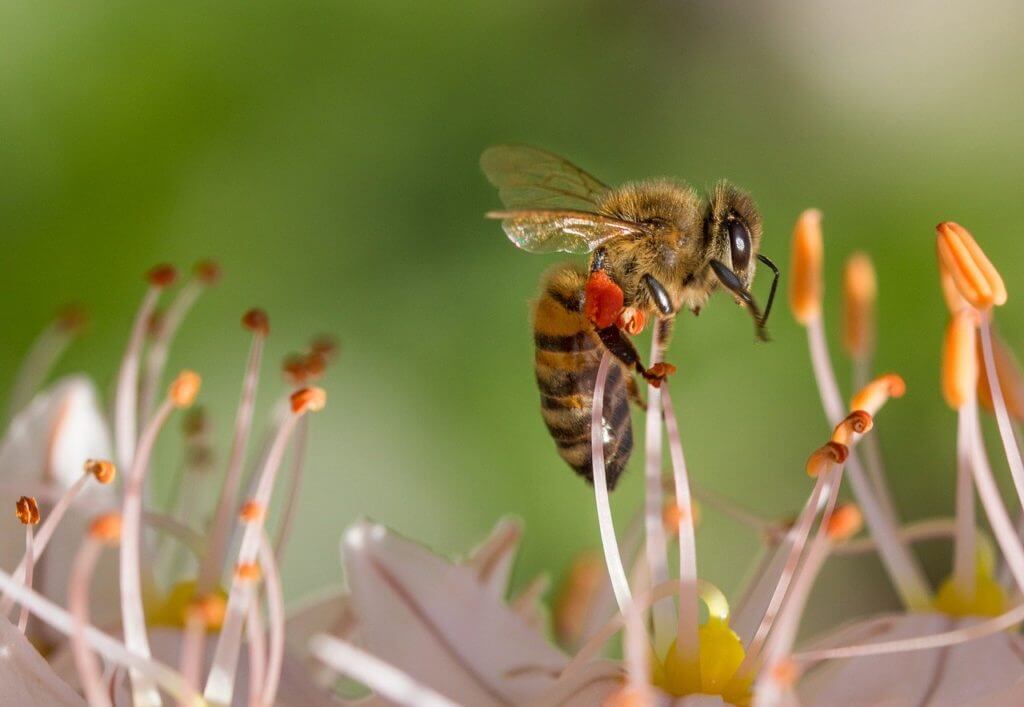
- Worker honey bees are all females. Males do not know how to even feed themselves and their only reason for being in the hive is for reproducing with the queen. The males do not have a stinger and they are kicked out of the hive in the autumn, because there are no uses for them.
- Honey bees are very clean .They want their hive (which they made themselves, hexagon by hexagon) to be immaculately clean. If something dirties their hive, they will immediately get the offense out. The only honey bee in the hive that uses the bathroom inside the hive is the queen. She never leaves the hive, so her faithful workers get her mess right out. Bees will also make sure that when their time comes, they will die outside of the hive.
- There is only one queen per hive. The queen lives 2-3 years. The queen is made, rather than born. Worker bees will feed larvae royal jelly for a certain period of time. The royal jelly is secreted through the heads of the worker bees and is fed through their antennas to the larvae. The royal jelly has so many vitamins and nutrients it will allow for the larvae to become queens. Since there can only be one queen per hive, the potential queen bees will fight to the death until there is one queen remaining.
- Honey bees, like their name implies, are the only insects to make honey. Bumblebees make a honey like substance, but it tastes nothing like the sweet honey we know and love. They also make this in very small quantities. Honey bees though make honey in surplus so bee keepers are able to take a certain amount without hurting the bees or depriving them of food.
- Honey bees never sleep! No wonder worker bees have such a short lifespan!
- Honey bees are the only insects that produce something that humans eat. It is also the only food that never goes bad! Its sugar content is too high and because it is naturally anti microbial, (Anti fungal, anti bacterial, anti everything nasty) which is why it’s also such an incredible healer.
- The honey bee colonies each have a distinct odor which allows for them to identify the members. Often times bee keepers will need to assimilate colonies. A way to do that would be to place bees from each colony into a paper bag together. The paper bag should have a divider so each colony stays in its own side. Being in the container together the smells will mix and they will not be able to recognize the other bees as enemies due to their familiar odor.
- The Queen bee lays up to 2,000 eggs per day! She can also select the gender of the larvae. Most larvae that will be produced will be female..
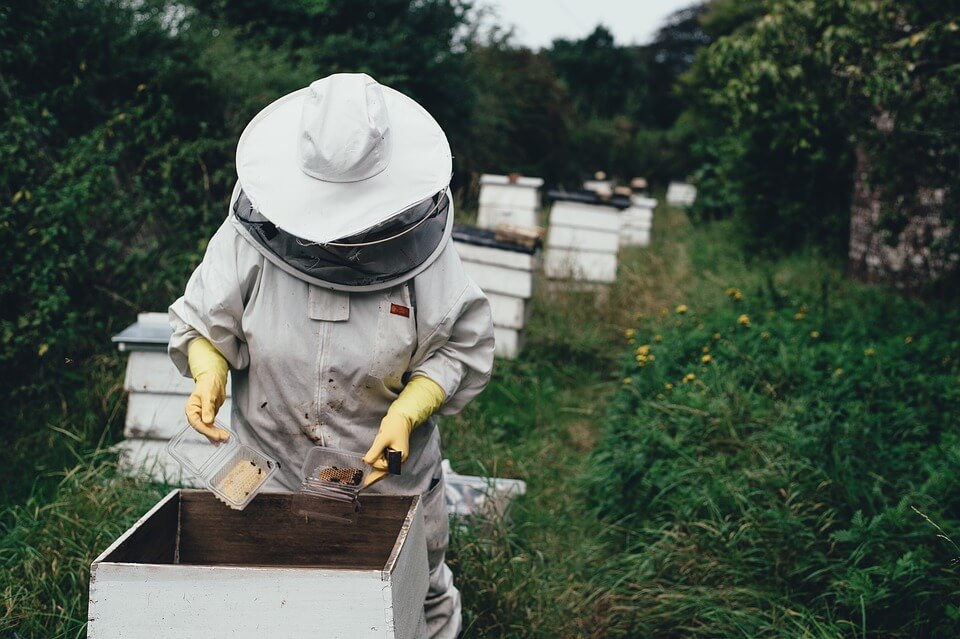

- To make one pound of honey it would take 556 workers and 2 million flowers. 50-100 flowers are pollinated during one collection trip. About one ounce of honey is all it takes to give the honey bee enough energy to fly around the world (although the farthest they usually fly away from their hive is six miles).
- Honey never spoils. No need to refrigerate it. It can be stored unopened, indefinitely, at room temperature in a dry cupboard.
- Due to the high level of fructose, honey is 25% sweeter than table sugar . .
- Honey is created when bees mix plant nectar, a sweet substance secreted by flowers, with their own bee enzymes.
- To make honey, bees drop the collected nectar into the honeycomb and then evaporate it by fanning their wings.
- Honey has different flavors and colors, depending on the location and kinds of flowers the bees visit. Climatic conditions of the area also influence its flavor and color. NZ’s Rata honey is nearly white, Manuka honey is rich ginger-brown and Black Beech honeydew honey is dark brown.
- To keep their hives strong, beekeepers must place them in locations that will provide abundant nectar sources as well as water.
- In the days before biology and botany were understood, people thought it was a special kind of magic that turned flower nectar into honey.
- Honeybees are one of science’s great mysteries because they have remained unchanged for 20 million years, even though the world changed around them.
- The true honey bee was not known in New Zealand until 1839, when an English woman Miss Bunby, introduced the European honey bee species we have today, Apis mellifera. The Americas didn’t have honey bees until they were introduced by Spanish, Dutch, and English settlers near the end of the 17th century.
- Did you know that bees have 4 wings?
- The honeybee’s wings stroke 11,400 times per minute, thus making their distinctive buzz.
- The queen bee is the busiest in the summer months, when the hive needs to be at its maximum strength. She will lay about 1,000 to 1,500 eggs per day, without sleeping.
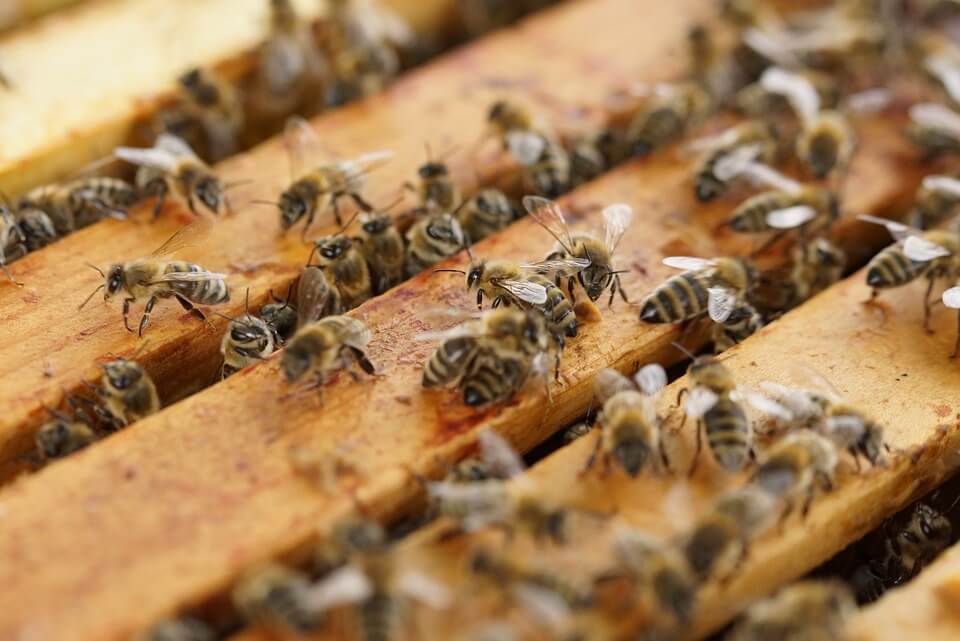

- In the cold winter months, bees will leave the hive only to take a short cleansing flight. They are fastidious about the cleanliness of their hive.
- Honeybees do not die out over the winter, but reduce numbers by throwing out the old, the weak and drones. They feed on the honey they collected during the warmer months and patiently wait for spring by forming a tight cluster in their hive to keep the queen and themselves warm. They may forage on sunny days and collect nectar and some queens will lay, but less.
- It takes 35 pounds of honey to provide enough energy for a small colony of bees to survive the winter.
- Nurse bees work inside the hive. Their job is to make royal jelly, feed and clean the larvae, queen and drones.
- House bees clean away the dead, make wax and comb, heat/cool the hive, receive nectar and make honey, put it into the comb, sealing it with wax.
- A honeybee visits between 50 and 100 flowers during one collection flight from the hive.
- In order to produce 1 kg of honey, about 4 million flowers must be visited.
- A honey bee flies at about 24 km/h (15 mph).
- One bee colony can produce up to 150kg of honey per year.
- An average worker bee makes only about ½ to 1 teaspoon of honey in its lifetime.
- At the peak of the honey-gathering season, a strong, healthy hive will have a population of approximately 50,000 bees.
- It would take approximately 1 ounce of honey to fuel a bee’s flight around the world.
- Honey is the primary food source for the bee. The reason honeybees are so busy collecting nectar from flowers and blossoms is to make sufficient food stores for their colony over the winter months. The nectar is converted to honey by the honeybee and stored in the wax honeycomb.
- In New Zealand, we have almost 5000 beekeepers, most are hobbyists with less than 5 hives.
- Honey contains vitamins and antioxidants, but is fat free, cholesterol free and sodium free!
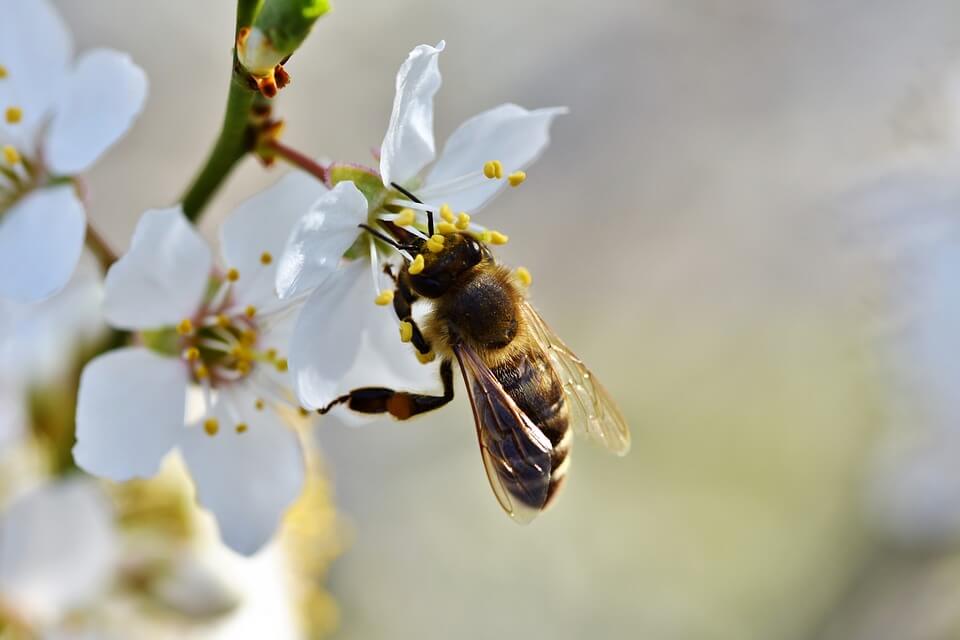
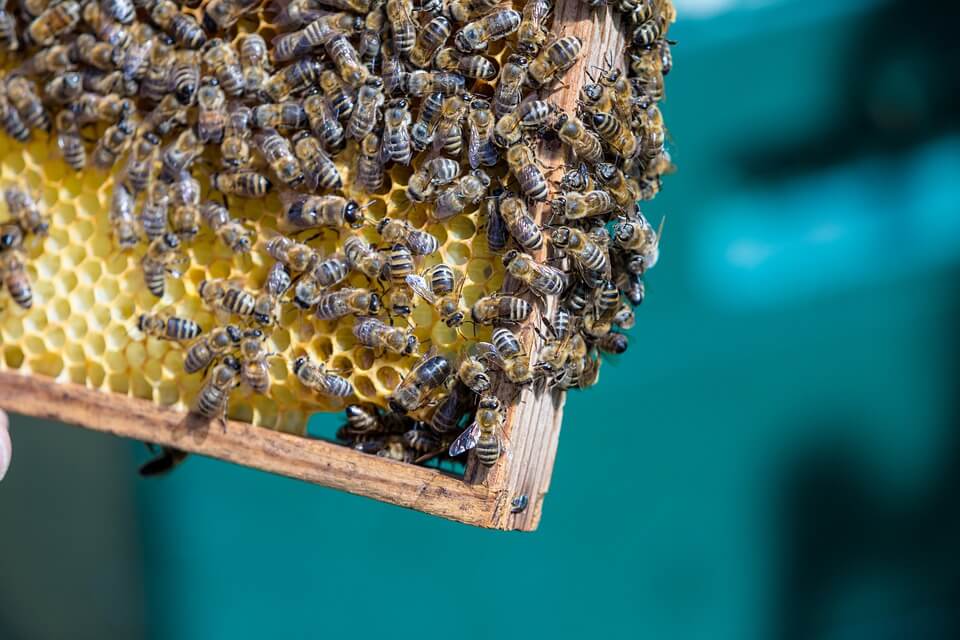
- Not a spinach lover? Eat honey – it has similar levels of heart-healthy antioxidants!
- One powerful antioxidant called “pinocembrin” is only found in honey and propolis.
- For years, opera singers have used honey to boost their energy and soothe their throats before performances.
- Honey has the ability to attract and absorb moisture, which makes it remarkably soothing for minor burns and helps to prevent scarring.
- Honey speeds the healing of open wounds and also combats infection.
- As recently as the First World War, honey was being mixed with cod liver oil to dress wounds on the battlefield.
- Modern science now acknowledges honey as an anti-microbial agent, which means it deters the growth of certain types of bacteria, yeast and moulds.
- Honey and beeswax form the basics of many skin creams, lipsticks, and hand lotions.
- Queen Anne of England, in the early 1700’s, invented a honey and olive oil preparation to keep her hair healthy and lustrous.
- According to Dr. Paul Gold, a Professor of Psychology at the University of Virginia, “people remember things much better after they’ve consumed glucose, a form of sugar found in honey.”
- Beeswax is made from tiny glands on the worker bee’s abdomen and melts at 62 -65 degrees C.
- Honey is nature’s energy booster! It provides a concentrated energy source that helps prevent fatigue and can boost athletic performance.
- Recent studies have proven that athletes who took some honey before and after competing recovered more quickly than those who did not.
- Honey supplies 2 stages of energy. The glucose in honey is absorbed by the body quickly and gives an immediate energy boost. The fructose is absorbed more slowly providing sustained energy.
- Honey is the only food that includes all the substances necessary to sustain life, including enzymes, vitamins, minerals, and water; and it’s the only food that contains “pinocembrin”, an antioxidant associated with improved brain functioning.

Discover the Honey that suits your needs
Manuka Honey is the honey that New Zealand is famous for. Bees gather the nectar from the white-pink flowers of our native Manuka tree and from this they make Manuka Honey.
Interested in learning more about what you can do to encourage bees into your garden? Here’s an interesting article from British journalist Hannah Miller
How Gardeners Can Protect the Bee Population With These Actionable Steps
